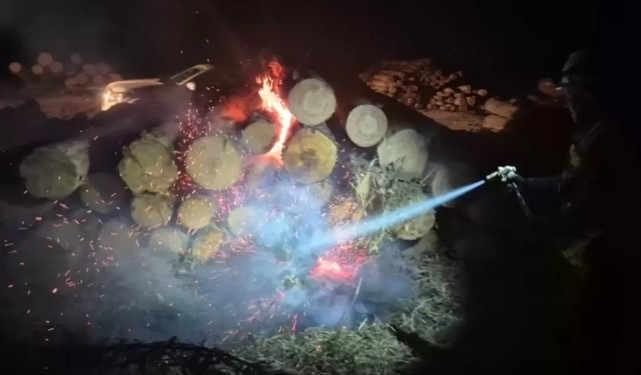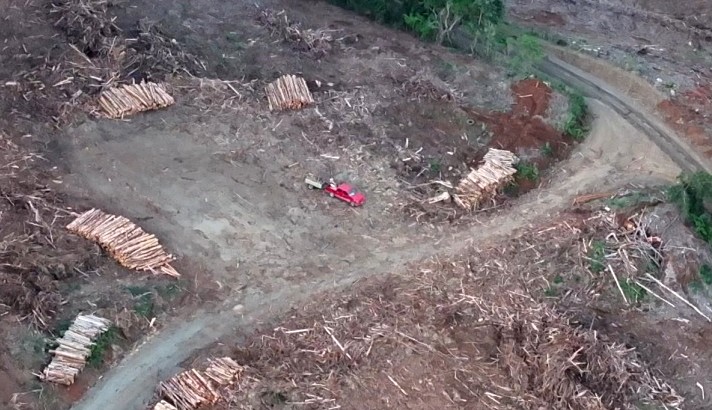Environmental Emergency: 6.7 Million Hectares of Forests Lost in 2024
No matter how colossal it may seem, even the deepest lung of the Earth can burn. The latest global deforestation figures prove this: in 2024, the planet lost 6.7 million hectares of primary tropical rainforests, an area comparable to the size of Panama. In a year marked by unprecedented wildfires, the rate of loss reached an overwhelming speed: the equivalent of 18 soccer fields vanished under smoke every minute.
According to the latest data from the University of Maryland’s GLAD lab, shared via the Global Forest Watch platform, this figure represents an 80% increase compared to the previous year.
The scale of this ecological catastrophe not only threatens biodiversity and global climate balance but also left behind 3.1 gigatons of greenhouse gas emissions—more than India emits from fossil fuel use in an entire year.
Fires were responsible for five times more losses in 2024 than in 2023, an escalation attributed to extreme weather conditions—the hottest year ever recorded, fueled by climate change and the El Niño phenomenon. The Brazilian Amazon, the planet’s most biodiverse region, was one of the epicenters of this disaster. Brazil, home to the largest expanse of primary tropical rainforest in the world, accounted for 42% of the total recorded loss.
The situation worsened due to state policies that weakened environmental protections. In key states like Mato Grosso and Rondônia, laws were passed undermining historic deforestation moratoriums. This legal leniency, combined with agribusiness expansion, threatens to perpetuate a cycle of destruction and droughts.
Bolivia
Bolivia, meanwhile, emerged as a tragic revelation: primary forest loss skyrocketed by 200%, placing the Andean country as the second most affected globally, only behind Brazil. The liberalization of exports and incentives for agrochemical use fueled agricultural expansion and, with it, deforestation.
Paradoxically, it was an indigenous reserve, Charagua Iyambae, that managed to resist the flames, thanks to community-led early warning systems and sustainable land-use policies.
Guatemala
The Mesoamerican region also suffered the onslaught of fire. Guatemala lost 2.7% of its primary forest, with wildfires forcing the president to declare a natural disaster.
Mexico, where fires consumed nearly double the forest area compared to the previous year, saw states like Campeche and Quintana Roo leading the destruction, partly linked to agricultural expansion driven by Mennonite communities.
Congo
The Congo Basin, another stronghold of virgin forests, did not escape deterioration. The Democratic Republic of the Congo and its neighbor, the Republic of the Congo, recorded the highest levels of forest loss in their history. In this region, the problem goes beyond fire: logging for charcoal, shifting agriculture, and illegal mining are slowly eroding Africa’s green heart. Armed conflict, forced displacement, and widespread poverty make deforestation a tragic necessity for survival.
Despite this grim outlook, there were islands of hope. Indonesia and Malaysia managed to reduce their loss rates, partly due to forest management policies, off-season rains, and active private-sector involvement. However, the numbers still fall far short of the global commitments made in the Glasgow Declaration, where over 140 countries pledged to halt and reverse forest loss by 2030.
Beyond the tropics, the crisis was also felt. Canada and Russia, with their vast boreal expanses, experienced massive wildfires that accelerated tree cover loss. These forests, vital for global carbon balance, now face a dangerous feedback loop: the more they burn, the more carbon they release, and the more carbon they release, the hotter the planet becomes.
The message of 2024 is clear: we are failing. To reverse this trend and meet climate and biodiversity goals, annual forest loss must be reduced by at least 20% starting this year. This requires stable political commitments, deforestation-free supply chains, adequate climate financing, and, above all, economic models that place communities and their forests at the heart of recovery.
Source:National Geographic

















